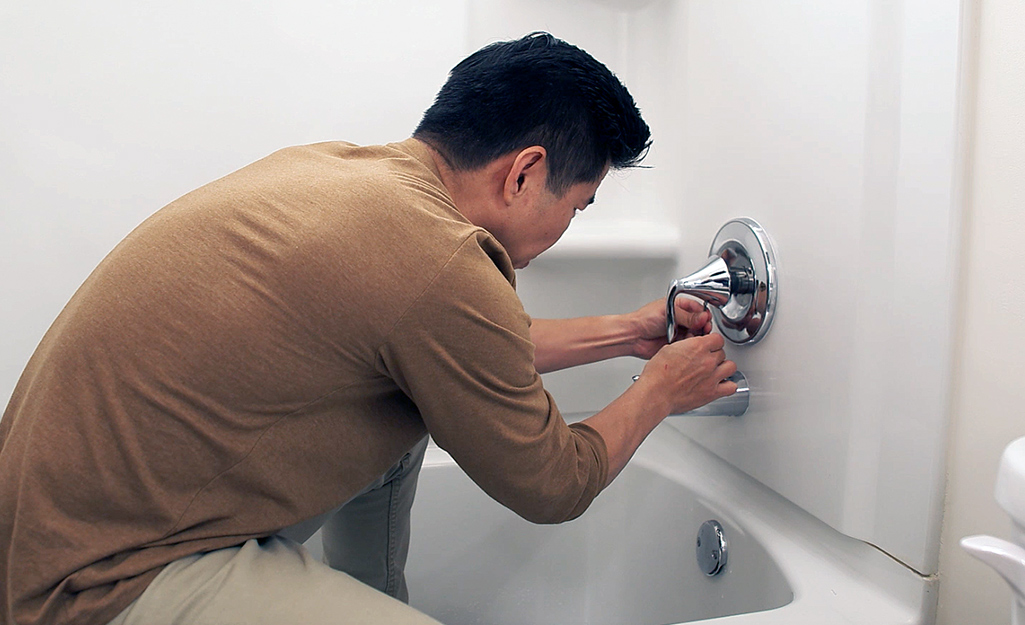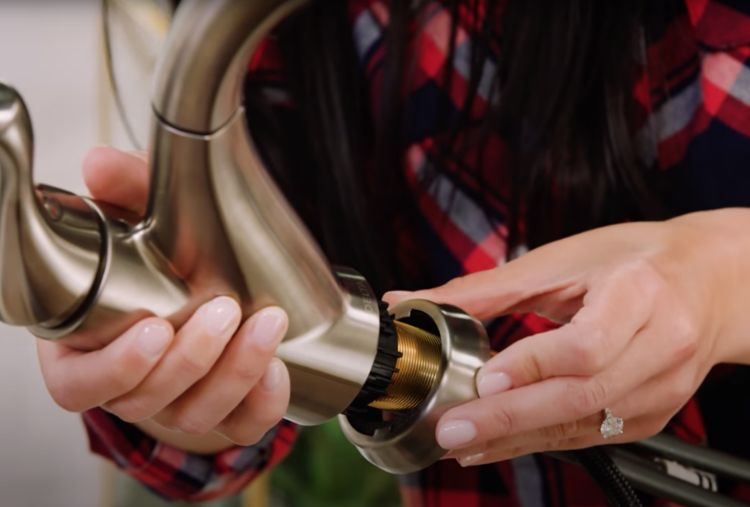Nearly everybody will have their private perception on the subject of Should I Repair or Replace a Leaky Faucet?.

Trickling faucets might feel like a minor hassle, yet their effect goes beyond just the aggravation of the audio. From drainage to incurring unnecessary economic prices and health risks, neglecting a leaking tap can result in various effects. In this write-up, we'll look into why it's essential to address this common family issue without delay and successfully.
Wastage of Water
Ecological Influence
Dripping taps contribute significantly to water wastefulness. According to the Environmental Protection Agency (EPA), a single faucet dripping at one drip per second can throw away more than 3,000 gallons of water each year. This not just stress water resources but likewise impacts ecosystems and wild animals dependent on them.
Step-by-Step Overview to Fixing a Dripping Faucet
Tools Required
Prior to trying to deal with a trickling tap, gather the needed tools, including a flexible wrench, screwdrivers, replacement parts (such as washers or cartridges), and plumber's tape.
Common Tap Issues and Their Solutions
Recognize the kind of tap and the particular problem triggering the drip. Common issues consist of worn-out washers, corroded valve seats, or malfunctioning O-rings. Describe producer directions or on-line tutorials for step-by-step guidance on fixings.
Financial Prices
Raised Water Costs
Beyond the environmental effect, dripping taps can inflate water bills considerably. The built up waste gradually equates into greater utility costs, which could have been avoided with timely repair work.
Possible Property Damage
In addition, extended dripping can lead to harm to components and surfaces bordering the faucet. Water accumulation can create discoloration, deterioration, and also architectural concerns if left neglected, leading to additional repair service expenses.
Health and wellness Worries
Mold And Mildew and Mold Development
The constant visibility of dampness from a trickling faucet develops an ideal environment for mold and mildew growth. These fungi not only compromise indoor air quality yet also posture wellness threats, particularly for individuals with respiratory system problems or allergies.
Waterborne Illness
Stagnant water in dripping taps can become a breeding ground for bacteria and other virus, increasing the risk of waterborne diseases. Pollutants such as Legionella microorganisms prosper in stagnant water, potentially resulting in severe ailments when consumed or inhaled.
DIY vs. Professional Repair service
Pros and Cons of Do It Yourself Repair Work
While some may attempt to deal with a trickling tap themselves, do it yourself fixings feature their own collection of obstacles. Without proper knowledge and tools, DIY attempts can intensify the problem or lead to incomplete repairs, prolonging the problem.
Benefits of Hiring an Expert Plumber
Working with a specialist plumber ensures that the underlying reason for the leaking tap is resolved effectively. Plumbers have the proficiency and tools to identify and fix tap problems successfully, conserving time and reducing the threat of additional damage.
Ecological Duty
Specific Payment to Preservation
Taking responsibility for fixing trickling faucets lines up with more comprehensive initiatives towards water conservation and environmental sustainability. Every person's actions jointly make a substantial effect on preserving valuable sources.
Sustainable Living Practices
By prioritizing prompt repairs and embracing water-saving habits, people add to lasting living practices that benefit both present and future generations.
Preventive Measures
Normal Maintenance Tips
To stop trickling taps, execute regular upkeep such as cleaning up aerators, checking for leaks, and changing worn-out components without delay. Furthermore, consider installing water-saving gadgets or upgrading to more efficient fixtures.
Significance of Prompt Fixes
Resolving dripping taps as soon as they're seen prevents additional water wastage and possible damages, inevitably conserving both water and cash over time.
Impact on Property Value
Perception of Well-Maintained Home
Maintaining a building in good condition, including dealing with upkeep issues like trickling faucets, boosts its regarded worth and charm amongst potential purchasers or lessees.
Impact on Resale Value
Properties with well-maintained plumbing fixtures, including taps, command higher resale values in the real estate market. Attending to trickling taps can add to a favorable impact throughout home assessments and settlements.
Final thought
Attending to a dripping tap surpasses plain ease; it's a crucial step toward saving water, lowering economic expenses, and securing health and wellness and residential property. Whether via do it yourself fixings or specialist help, acting to fix trickling faucets is a small yet impactful means to advertise responsible stewardship of sources and add to a much healthier, extra sustainable future.
How to Fix a Dripping or Leaky Faucet
A leaking faucet is one of the most common problems that homeowners encounter, but it being commonplace doesn’t make it any less annoying. The constant drip drip drip of a leaking bathtub faucet, showerhead, or sink tap can disturb your home’s serenity. Left neglected, a dripping faucet can also result in higher water bills and discoloration or mold growth in your sink or plumbing fixtures.
Fortunately, you don’t have to be a trained plumber to know how to stop a dripping faucet. With some basic tools, replacement parts, and a little patience, leaky faucet repair is a breeze. In this article, we’ll explain what causes dripping faucets and how you can fix them.
What Causes a Leaking Faucet?
Kitchen and bathroom faucets come in all manner of designs, but most involve some combination of valves, O-rings, seals, and washers. The O-ring is usually the weakest link, but any one of these pieces can wear down over time. Heat, moisture, temperature fluctuations, minerals, mold, and movement can contribute to warping and corrosion, breaking the watertight seal. This just comes with the territory of being a homeowner. Everything is always subject to wear and tear, and some component parts of your appliances and fixtures need to be replaced on occasion. At least replacement O-rings are cheap!
More rarely, dripping faucets can be a symptom of excessively high water pressure. Were this the case in your home, you would probably notice that the leak is not isolated to one faucet. Water pressure issues are harder to resolve on your own. We recommend contacting a professional plumber if you suspect your water pressure is too high.
How to Fix a Dripping Faucet
Pipe wrench or monkey wrench Allen wrench set Screwdrivers Old towel or rag Shut off the water.
Before you do anything, you need to turn off the water to keep from drenching your kitchen or bathroom. You should find a valve under the sink and against the wall. Once you’ve turned this valve, try turning the faucet on to confirm that the water source has been cut off.
If you can’t locate your local valve for the faucet you’re working on, you can always shut off the water to the house at the main valve. Of course, this will prohibit anyone from using the sinks, showers, or toilets while you’re working on the faucet that’s giving you trouble.
Plug or block the drain.
You’ll be disassembling the faucet and removing some small bits of hardware. Plug the drain with a stopper or rag to avoid the possibility of a small screw falling into your P-trap.
Take apart the faucet assembly.
There are several varieties of kitchen and bathroom faucets, each with its own manner of assembly. For detailed instructions on how to disassemble your faucet, you can refer to the fixture’s manual or contact the manufacturer. If you know whether you have a ball, disc, cartridge, or compression faucet, you can find detailed schematics online.
In general, you need to begin by removing the faucet handles. You might notice a small screw that you’ll need to remove with a screwdriver or Allen wrench. If you don’t see any visible securing hardware, it’s likely hidden under a decorative cap that can be unscrewed or popped off with flathead screwdriver.
Remove each piece methodically, consulting a schematic when necessary. Take notes or arrange the pieces in such a way to make it easier to correctly reassemble the faucet later.
Remove the cartridge.
Once you’ve removed the handles and securing hardware, you should be able to remove the valve cartridge or stem. Some cartridges will slide right out. Other faucet models will require you to loosen a nut with a pipe wrench before you can remove the valve stem.
Examine the exposed hardware.
With the cartridge or stem removed, inspect the component parts. Check the rubber O-rings for wear and tear. Also examine the seat washer for corrosion or other damage. These pieces are usually the responsible parties for a dripping faucet, but it’s worth inspecting the other component parts while you have the faucet disassembled.
Find replacement parts.
Once you’ve identified which faucet component has failed, find an identical replacement. Your local hardware store should have O-rings, seat washers, and other standard components in stock. If you have a luxury or uncommon faucet, you may have to contact the manufacturer for a replacement part.
It’s a good idea to take your old parts with you to the hardware store so you can compare them with the store’s inventory and be sure you’re purchasing the correct replacement.
Reassemble the faucet.
With your new parts in hand, reconstruct the faucet and handles. Don’t be tempted to overtighten screws or nuts. You might think this could create a better seal, but it can instead damage or bend a delicate part of the assembly and create a new problem for you.
Turn on the water and test the faucet.
The only thing left to do is test your work. Unplug the sink, turn the water back on, and try the faucet. Congratulate yourself on a job well done!
https://www.libertyhomeguard.com/how-to-fix-a-dripping-or-leaky-faucet/

Do you like reading about What Causes Leaky Faucets & How To Fix Them? Try to leave feedback further down. We will be glad to hear your thinking about this write up. In hopes that you visit us again in the future. If you enjoyed reading our blog entry kindly consider to share it. Thanks a bunch for being here. Return soon.